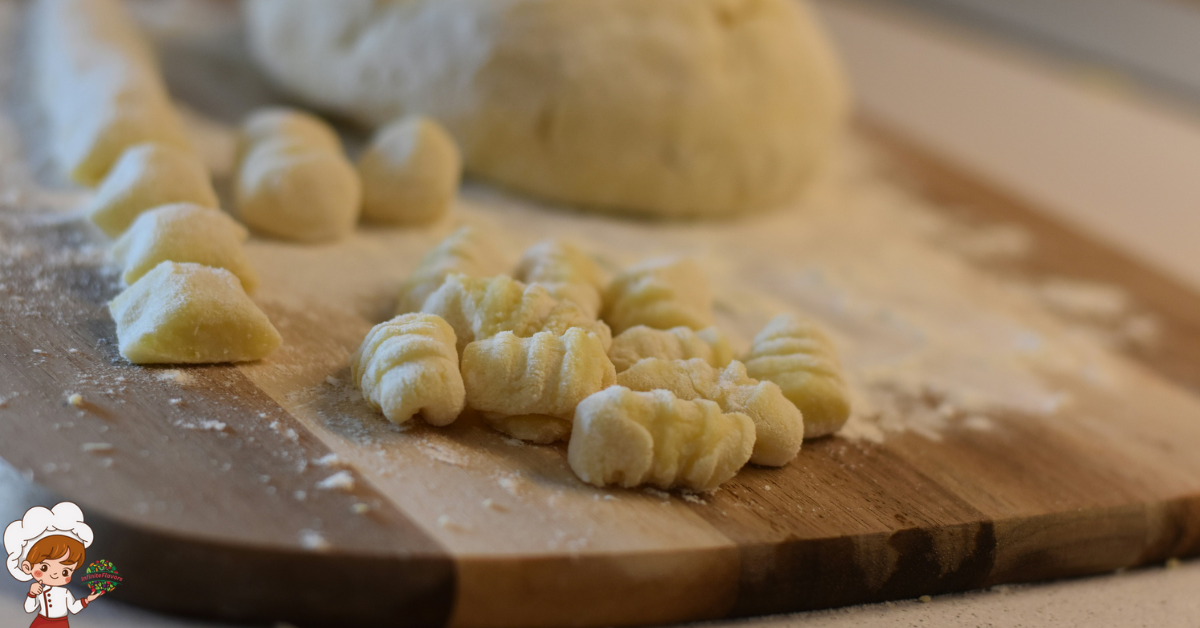Important Italian Cooking Techniques And Tips

Italian Cooking Techniques And Tips; Welcome to the world of Italian cooking, where the kitchen becomes your own personal symphony. Just like a conductor, you have the power to create delicious masterpieces using simple ingredients and a few key techniques. In this guide, we will explore the art of Italian cooking, sharing tips and tricks to help you achieve perfection in every dish. From mastering the art of pasta to creating authentic sauces, enhancing flavors with herbs and spices, and even making traditional Italian pizza at home – we’ve got you covered. So grab your apron and let’s get cooking – it’s time to bring the flavors of Italy into your kitchen!
Mastering the Perfect Pasta
To achieve the perfect pasta, you should start by selecting the right type of noodle for your dish. The type of pasta you choose can greatly impact the overall taste and texture of your meal. For example, long, thin noodles like spaghetti or linguine are perfect for light sauces that can coat each strand evenly. On the other hand, hearty, chunky sauces pair well with larger shapes such as rigatoni or penne, as they can capture and hold the sauce in their nooks and crannies.
Now that you have chosen the perfect noodle, let’s talk about some pasta cooking techniques that can take your dish to the next level. The most important thing to remember when cooking pasta is to use a large pot of boiling, salted water. This ensures that the pasta cooks evenly and doesn’t stick together. As for the cooking time, it is crucial to follow the instructions on the package, but always taste for doneness before draining. Al dente, meaning “to the tooth” in Italian, is the desired texture for pasta – it should be cooked but still have a slight bite to it.
Once your pasta is cooked to perfection, it’s time to elevate it with a delicious sauce. There are countless pasta sauce variations to explore, from classic marinara to creamy Alfredo. Each sauce has its own unique flavor profile and pairs well with different types of pasta. For example, a light tomato-based sauce works wonderfully with delicate noodles like angel hair, while a rich, meaty Bolognese sauce complements thick ribbons of pappardelle.
Creating Authentic Sauces
First, master the art of creating authentic sauces for your Italian dishes. The key to achieving that true Italian flavor lies in the homemade pasta sauces you use. Whether you’re making a classic marinara or a rich and creamy Alfredo, the right sauce can elevate your dish from ordinary to extraordinary.
When it comes to authentic pasta dishes, the sauce is the star of the show. Italians take great pride in their sauces, which are often passed down through generations. Each region of Italy has its own unique sauce recipes, showcasing the local flavors and ingredients.
To create a truly authentic sauce, start with the freshest ingredients possible. The quality of your tomatoes, herbs, and spices will greatly impact the taste of your sauce. Italians believe in letting the natural flavors shine, so avoid using too many ingredients that may overpower the dish.
Another tip for creating authentic sauces is to take your time. Many traditional Italian sauces are simmered for hours to allow the flavors to meld together and develop a depth of taste. Patience is key when it comes to achieving that rich and robust flavor.
Lastly, don’t be afraid to experiment with different ingredients and techniques. While there are classic recipes to follow, Italian cooking is all about creativity and personalization. Add a splash of red wine to your marinara for a touch of acidity, or toss in some pancetta to add a smoky flavor to your Bolognese.
Enhancing Flavors With Herbs and Spices
Ready to take your Italian cooking to the next level? Enhancing the flavors of your dishes with the right combination of herbs and spices is the key. Discover the perfect herb pairings and spice selections that will elevate your dishes from ordinary to extraordinary. Get ready to tantalize your taste buds and impress your guests with these tips and tricks.
Herb Pairing Suggestions
When enhancing the flavors of your Italian dishes with herbs and spices, it is important to consider the principles of herb pairing. One way to enhance the taste of your dishes is by combining herbs with cheese. For example, basil pairs beautifully with mozzarella, while rosemary complements Parmesan. These herb and cheese combinations can elevate the flavors of your dishes, adding depth and complexity.
Another great tip is to grow your own herbs. Not only does this allow you to have fresh herbs on hand whenever you need them, but it also gives you the opportunity to experiment with different flavors and combinations. Whether you have a small garden or just a few pots on your windowsill, growing your own herbs is a simple yet rewarding way to enhance the flavors of your Italian dishes.
Spice Selection Tips
To enhance the flavors of your Italian dishes with herbs and spices, start by carefully selecting the right combination of spices and herbs to complement your ingredients. When it comes to spice selection, it’s important to consider the freshness and quality of the spices. Opt for whole spices instead of pre-ground ones as they tend to lose their flavor quicker.
To ensure your spices stay fresh, store them in airtight containers away from heat and sunlight. This will help maintain their potency for longer periods. Don’t be afraid to experiment with different spice blends to add depth and complexity to your dishes. Mix and match herbs and spices to find the perfect combination that suits your taste. So go ahead, open up your spice cabinet, and let your creativity flow!
Perfecting Risotto and Risotto Variations
Are you ready to master the art of making creamy risotto? Learn the secrets to achieving that perfect texture and consistency that will have your guests begging for seconds. Discover how to enhance the flavors of your risotto by using a rich and flavorful broth as the base. And don’t be afraid to get creative with your risotto combinations, exploring unique and delicious flavor pairings that will elevate your dish to the next level. Get ready to become a risotto pro!
Creamy Risotto Secrets
Master the art of making creamy risotto by following these essential tips and techniques.
- Use Arborio or Carnaroli rice: These varieties have a high starch content, which is crucial for achieving a creamy texture in your risotto.
- Toast the rice: Sautéing the rice in butter or olive oil before adding the liquid helps to seal in the flavors and gives the dish a nutty aroma.
- Add the liquid gradually: Pouring the broth slowly and stirring continuously allows the rice to absorb the liquid evenly, resulting in a creamy consistency.
To create creamy risotto variations, you can experiment with different ingredients. Try adding mushrooms for an earthy flavor, or shrimp for a seafood twist. For a burst of freshness, incorporate vibrant vegetables like peas or asparagus. The key is to let your imagination run wild while keeping the risotto creamy and luscious. With these tips and variations, you’ll be able to impress your guests with your mastery of creamy risotto.
Enhancing Flavors With Broth
Enhance the flavors of your risotto and create perfect variations by incorporating broth into the cooking process. Using broth for homemade soups is a common practice, but it can also be a game-changer when it comes to risotto. The rich and savory flavors of the broth infuse into the rice, creating a dish that is bursting with taste. Broth-based marinades are another way to elevate the flavors of your meat and vegetables. Simply marinate your ingredients in a mixture of broth, herbs, and spices before cooking, and watch as the flavors intensify.
Whether you’re making a classic risotto or experimenting with different variations, adding broth is the secret ingredient that will take your dish to the next level. So, don’t forget to stock up on broth the next time you’re at the grocery store, and get ready to impress your family and friends with your flavorful creations.
Creative Risotto Combinations
To perfect your risotto and explore a variety of flavorful combinations, try experimenting with different ingredients and techniques. Risotto is a versatile dish that can be customized to suit your taste preferences. Here are three creative risotto flavor combinations to inspire you:
- Mushroom and truffle risotto: The earthy flavors of mushrooms combined with the rich and luxurious aroma of truffles create a decadent and indulgent dish.
- Lemon and asparagus risotto: The bright and refreshing taste of lemon pairs perfectly with the tender and crisp asparagus, adding a burst of freshness to your risotto.
- Tomato and basil risotto: This classic combination of sweet and juicy tomatoes with fragrant basil brings a taste of summer to your plate, creating a vibrant and flavorful risotto.
When it comes to risotto cooking techniques, remember to slowly add the broth and stir continuously to achieve a creamy and velvety texture. Don’t be afraid to experiment with different ingredients and flavor combinations to create your own unique and delicious risotto creations.
Making Traditional Italian Pizza at Home
To make traditional Italian pizza at home, start by perfecting your dough-making technique. Homemade pizza dough is the foundation of a delicious pizza, and getting it right will make all the difference in the end result. The key to a perfect pizza dough lies in the ingredients and the method of preparation.
When making your pizza dough, you’ll need a few staple ingredients: flour, water, yeast, salt, and a touch of olive oil. Start by combining the flour, yeast, and salt in a mixing bowl. Gradually add water and olive oil while kneading the dough until it forms a smooth and elastic ball. Let it rest and rise for a couple of hours to develop the flavors.
Once your dough is ready, it’s time to unleash your creativity with traditional pizza toppings. Classic options include tomato sauce, mozzarella cheese, basil leaves, and a drizzle of olive oil. However, don’t be afraid to experiment with other toppings like fresh vegetables, cured meats, and different cheeses. The key is to balance the flavors and textures to create a harmonious and satisfying pizza.
When it comes to baking your pizza, a hot oven is essential. Preheat your oven to the highest temperature and place a pizza stone or baking sheet inside to heat up. Stretch out your dough into a round shape and carefully transfer it onto the hot surface. Bake for about 10-15 minutes, or until the crust is golden and crispy.
Making traditional Italian pizza at home is a rewarding experience that allows you to enjoy the authentic flavors of Italy in the comfort of your own kitchen. With a little practice and the right technique, you’ll be able to create mouthwatering pizzas that rival those from your favorite pizzeria. So, roll up your sleeves, get your ingredients ready, and let the pizza-making adventure begin!
Cooking the Perfect Italian Meatballs
Create flavorful Italian meatballs by combining ground meat, breadcrumbs, herbs, and spices. Cooking the perfect Italian meatballs requires a few essential techniques and the right meatball seasoning. Here are some tips to help you achieve meatball perfection:
- Mixing the Ingredients: Start by combining your ground meat, breadcrumbs, herbs, and spices in a bowl. Use your hands to mix everything together thoroughly. This will ensure that all the flavors are evenly distributed throughout the meat mixture.
- Forming the Meatballs: Take a small amount of the mixture and roll it between your palms to form a ball. Make sure to pack the meatballs tightly, so they hold their shape during cooking. A tip is to wet your hands slightly with water to prevent the mixture from sticking to your hands.
- Cooking Techniques: There are different cooking techniques you can use for Italian meatballs, such as baking, frying, or simmering in sauce. Baking is a healthier option as it requires less oil, while frying gives the meatballs a crispy exterior. Simmering the meatballs in sauce allows them to soak up the flavors and become tender.
To enhance the flavors of your meatballs, consider using traditional Italian meatball seasoning. This typically includes ingredients like garlic, onion, basil, oregano, and Parmesan cheese. However, feel free to experiment with other herbs and spices to create your own unique flavor profile.
Exploring the Art of Italian Breadmaking
If you want to master the art of Italian breadmaking, you should regularly practice different techniques and experiment with various recipes. Italian breadmaking techniques are known for their simplicity and emphasis on quality ingredients. One of the most important aspects of Italian breadmaking is the shaping of the dough. The way you shape the dough can greatly affect the texture and appearance of the final product.
To start, it is crucial to work with a well-hydrated dough. This means using the right amount of water and allowing the dough to rise properly. Once the dough has risen, you can begin shaping it into the desired form. One popular technique is the “batard” shape, which is similar to a baguette but shorter and wider.
To achieve this shape, gently stretch the dough into a rectangle and then fold the longer sides towards the center. Roll the dough tightly from one end to the other, creating a log shape. Another technique is the “round boule” shape, which is a classic round loaf. To achieve this shape, gently shape the dough into a ball by folding the edges towards the center and then rotating it in your hands, creating tension on the surface.
Tips for Perfecting Italian Desserts
Now that you have mastered the art of Italian breadmaking, it’s time to delve into perfecting Italian desserts by incorporating traditional techniques and exploring new flavors. Italian desserts are known for their exquisite presentation and indulgent flavors. Whether you’re planning a special occasion or simply want to treat yourself, here are some tips to help you create the perfect Italian dessert experience.
- Italian dessert presentation: Italian desserts are not just delicious; they are also a feast for the eyes. Pay attention to the presentation of your desserts by using elegant serving dishes and garnishes. Dust your desserts with a sprinkle of cocoa powder or powdered sugar for a touch of elegance. Consider serving individual portions in beautiful glassware to make your desserts even more visually appealing.
- Tips for making tiramisu: Tiramisu, a classic Italian dessert, is a crowd-pleaser that can be easily made at home. To achieve the perfect balance of flavors, soak the ladyfingers in strong coffee and a splash of liqueur, such as Marsala or Amaretto. Layer the soaked ladyfingers with a creamy mixture of mascarpone cheese, eggs, sugar, and vanilla extract. For the finishing touch, dust the top with cocoa powder. Refrigerate overnight to allow the flavors to meld together, resulting in a rich and creamy dessert.
- Experiment with flavors: While traditional Italian desserts are delightful, don’t be afraid to experiment with new flavors. Consider incorporating ingredients like pistachios, hazelnuts, or citrus fruits to add a unique twist to your desserts. You can also try using different types of liqueurs or spices to create exciting flavor combinations. Remember, the key is to balance the flavors harmoniously, so taste as you go and adjust accordingly.
Pairing Italian Wines With Your Italian Dishes
When pairing Italian wines with your Italian dishes, it is important to consider the complementary flavors and textures that will enhance your dining experience. Wine pairing is an art that can elevate your meal to new heights, and Italy is known for producing some of the finest wines in the world. With its rich culinary tradition and diverse regional cuisines, Italy offers a wide range of wines that perfectly complement its traditional flavors.
For pasta dishes like spaghetti carbonara or lasagna, a medium-bodied red wine such as Chianti or Barbera is an excellent choice. These wines have enough acidity and tannins to cut through the richness of the pasta and enhance the flavors of the dish. If you prefer white wine, a crisp and dry Vermentino or Pinot Grigio will pair well with lighter pasta dishes like linguine with clam sauce or pesto.
When it comes to pizza, you can’t go wrong with a classic red wine like Sangiovese or Nebbiolo. These wines have the right balance of acidity and fruitiness to complement the tangy tomato sauce and savory toppings. If you’re feeling adventurous, try a sparkling red Lambrusco for a fun and refreshing twist.
For meat dishes like ossobuco or bistecca alla Fiorentina, opt for a bold and full-bodied red wine such as Barolo or Amarone. These wines have intense flavors and robust tannins that can stand up to the richness and complexity of the dish.
Lastly, don’t forget about dessert! Pairing a sweet wine like Moscato or Vin Santo with traditional Italian desserts like tiramisu or cannoli can create a harmonious balance of flavors.
Conclusion: Italian Cooking Techniques
Congratulations! You now have the tools to master the art of Italian cooking. From creating the perfect pasta to exploring the art of Italian breadmaking, you can impress your friends and family with authentic and delicious dishes. Remember to enhance the flavors with herbs and spices, and don’t forget to pair your creations with the perfect Italian wine. So get cooking and indulge in the rich culinary traditions of Italy. Buon appetito!








